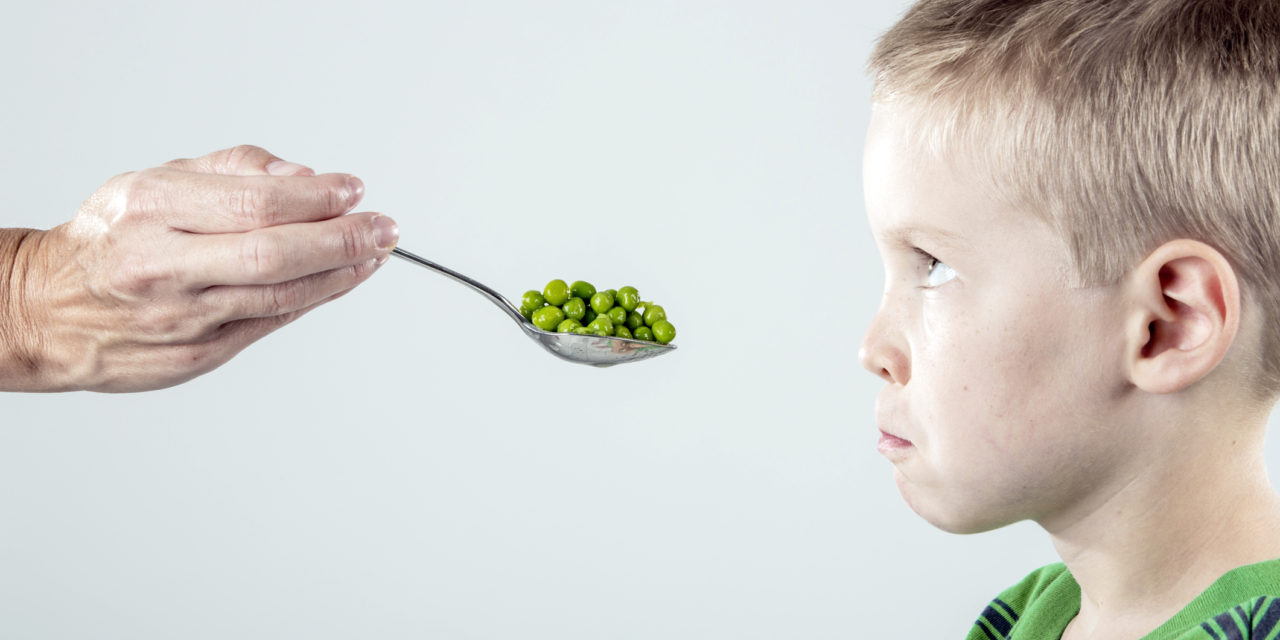Dinner in my house goes a little something like this: My husband makes a delicious meal for us and then makes a really boring menu for our kids, per their request. We give the kids their plates, and one of them generally cries as soon as they see it, saying they don’t like the “grill marks” on their plain chicken, or heaven forbid a speck of pepper is visible on their buttered noodles. then my 2-year-old will throw his plate across the living room and begins tantrumming that he wants a cookie and wants to get down. And then someone spills their milk.
Dinner in my house is hell.
And I know I’m not alone in the dinner battle—I have had countless conversations with friends about mealtime battles. I finally reached my breaking point when I tried to get our family to eat one meal, and the tears and whining reached epic proportions. The next day, I contacted Elizabeth Canepari, a registered dietician with an expertise in pediatric nutrition, hoping for suggestions on how to stop the madness.
“Parent’s are so concerned with what and how much their kids are eating,” Canepari told me. “But kids’ stomachs are only the size of a fist. How much we eat is not how much they need to eat.” For example, a serving of meat for a toddler, I was shocked to learn, is only 1 ounce, and they only need 2 servings a days, according to the American Academy of Pediatrics.
And then she said those magic words that you know in the back of your head to be true, but ignore when you’re pleading with them to eat the meatloaf. “No well child will purposely starve themselves,” she said. “They’ll eat if they’re hungry.”
I talked with Canepari about specific situations that I had come across (along with plenty of my parent-friends), for suggestions on how to battle them. Here is what she had to say:
PROBLEM 1: The toddler who won’t sit still long enough to eat a meal, but will happily snack all day.
Toddlers are on the go from the moment they open their eyes in the morning, and the last thing they want to do is be contained in a high chair for a meal. “This is common,” Canepari says, “so parents and caregivers need to be strong and set meal times and snack times.” She suggests starting small with structured snack times, having them sit for short periods, and then build up to meals. “Even though it will probably be hard (and maybe disastrous) in the beginning, they will get used to it and the idea of sitting at mealtime will stick,” she says. “We want toddlers to develop social norms like sitting at the table and eating at mealtime.”
PROBLEM 2: A preschooler who only eats a limited selection of foods and won’t try anything else (e.g. buttered noodles, chicken nuggets, yogurt).
“Toddlers and preschoolers want to be autonomous. It’s in their DNA,” Canepari says, and this is often most evident during mealtime, when they refuse to eat anything you give them. Many children suffer from neophobia, a fear of new food, so they develop strong preferences for things they are familiar with (i.e. they want to eat yogurt and cheese for every meal), which presents a challenge for parents when they want to have one meal for the entire family. If you give into their whims, you risk being a short-order cook—whipping up chicken nuggets for one, buttered noodles for the other, and olives for the third.
“The best thing is to offer a meal and remain neutral, if they don’t want to eat it, that’s fine. The more you fight them, the less likely they will be to try it,” Canepari says, adding it can take 10 to 20 times seeing the food before a child will try it. At this age, children are looking for control, so Canepari suggests serving dinner family style—you determine the menu and they determine what and how much they want. (You may want to incorporate one dish the child is comfortable with.) But no matter what, she says, remain neutral and calm. (For what it’s worth, I’ve switched to family-style dinners. It has worked wondrously, although there are more dishes and it hasn’t stopped my 2-year-old from throwing his plate on the floor.)
PROBLEM 3: A child won’t eat fruits and vegetables.
Yuck, vegetables. Who hasn’t heard that before. Fruits and vegetables are vital for human health, and yet they can be the most difficult foods to get kids to swallow. “Don’t force, beg or bribe,” Canepari starts—doing so only brings you down to their level. Instead, she says, describe fruits and veggies in a way children can understand (“These carrots are crunchy, just like the pretzels you love.) so they can associate characteristics with foods they like. Canepari isn’t a fan of hiding vegetables in foods—“Kids are really smart. They usually figure it out, and you don’t want them to have negative connotations.” Instead, incorporate them into snack time, she says, and consider serving them with a dip. “Kids love to dipping, and they will eat foods if they can dip them into something, like a low-fat cream cheese dip.”
Lastly, Canepari says, get kids working in the kitchen. Children love to help with the cooking, from stirring and mixing to dumping and peeling, and they’ll more likely eat something they’ve helped prepare. And, you should watch your own behaviors, as well—if you’re eating something different, they’ll notice. If you’re not sitting down, they’ll notice. “Set a good example,” she says. “That’s so important.”






